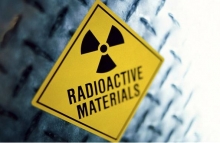With Nuclear Power very much in the news in the UK we thought it opportune to highlight some of the materials that MacLellan Rubber have supplied into this market over many years and to provide some information on the strengths and weaknesses of the various polymers in this environment.
MacLellan Rubber have long supplied specific EPDM and Neoprene formulations for use in Radiation environments and have enjoyed a strong relationship with Gasket Cutters supplying into this industry. These materials are European manufactured to ensure quality and complete traceability back through the supply chain and whilst price pressures have been raised on occasions, the cost of substituting alternatives has invariably proven costly for the converter.
Our materials are used in applications from Pipeline Gaskets on Water Treatment Lines, Waste Storage Container Seals through to Sectional Chamber Seals on Nuclear Submarines. Some of these would be challenging in general industrial environments, but once you add the effect of Radiation many materials the consequences of failure could be catastrophic. Typically rubber materials will become embrittled after short periods of exposure, this is due to the impact of collisions of the radiations with the electrons and nuclei of the rubber, effectively breaking the bond energies in the elastomer. In some cases this will also cause the elastomer to outgas, potentially introducing harmful gasses to what is often a controlled environment.
The right polymer selection for any application is critical and whilst by far the most commonly used rubber is EPDM it will not always be suitable. The following table is an overview of radiation stable polymers and their tolerance levels which we hope will give you some selection guidance.
*Kilogray is a derived metric (SI) measurement unit of absorbed radiation dose of ionizing radiation, e.g. X-rays. The SI prefix kilo stands for one thousand. The kilogray is equal to one thousand gray (1000Gy), and the gray is defined as the absorption of one joule of ionizing radiation by one kilogram (1 J/kg) of matter, e.g. human tissue.
To put this into context background radiation will typically be 400 mGy per annum (400 x 1000th of a Gray). Mice have a 50% mortality when exposed to 6 8 Gy in 30 days.
As always the effect of Temperature, Pressure and Media will have an impact on the materials performance in application. MacLellan Rubber are always pleased to discuss applications and offer technical advice on material selection where requested.

|
|
|